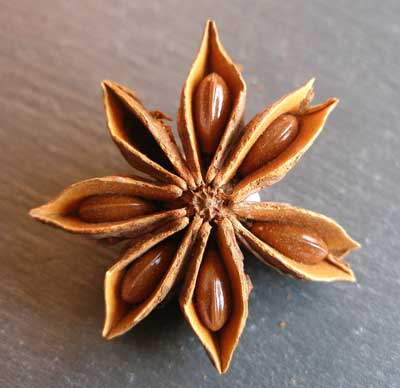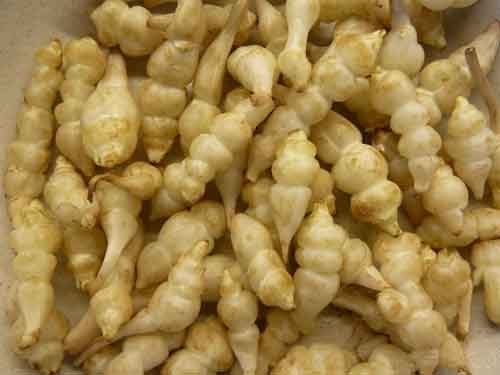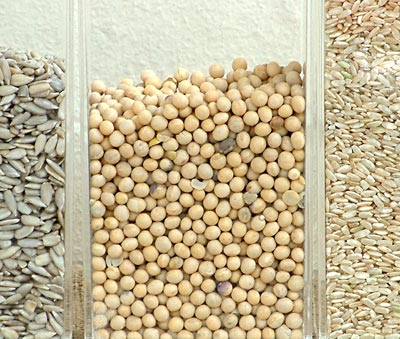The small flat kernel of the of the stone of the apricot. Because these are naturally toxic they must be blanched and then dried in an oven before use. Famously used to make amaretti.

is spice derived from the star-shaped pericarp fruit of a small tropical evergreen tree of the magnolia family, native to Vietnam and southwest China. Known variously as badiam, star anise/aniseed, and Chinese star anise, it is highly aromatic and tastes very similar to, but stronger than anise and liquorice, though it is not related. Hence, it is often a cheaper option and replacement for anise in baked goods. Star anise is also used in Sambuca, pastis, and many absinthes. Star anise is a component spice in Chinese 5-spice blend, in biryani, masala chai and garam masala, and in Vietnamese noodle soup, phở. Oil from Chinese star anise is used in cooking, as well as in perfumes, oral hygiene products, moisturizers, and in incense and candles. It is used in tradition Chinese medicine as an expectorant and contains the chemical compound, shikimic acid from which oseltamivir is derived, a drug used to treat flu symptoms.

The Chinese artichoke or crone is an unusual small tuberous vegetable, actually a rhizome with a flavour similar to Jerusalem artichoke and a texture like water chestnuts. Hedge nettle. Stachys. The neutral flavor renders the easy-to-grow root particularly suitable for mixing with legumes. Run under a strong stream of water to clean, parboil briefly and toss in salads or with other prepared vegetables and seasonings. Easy to establish in the garden and difficult to weed out once planted.
The Chinese or Japanese bellflower is a plant of the Campanula family indigenous to South East Asia. In Korea, where the root is often used in salads, gimchi and the like, it is more commonly found with white bells than with the blue bells found elsewhere.

Fermented salted soy beans used as a flavouring.

Shiitake mushrooms, which may be grilled or used in soups and stews. In Russia they are frequently pickled.